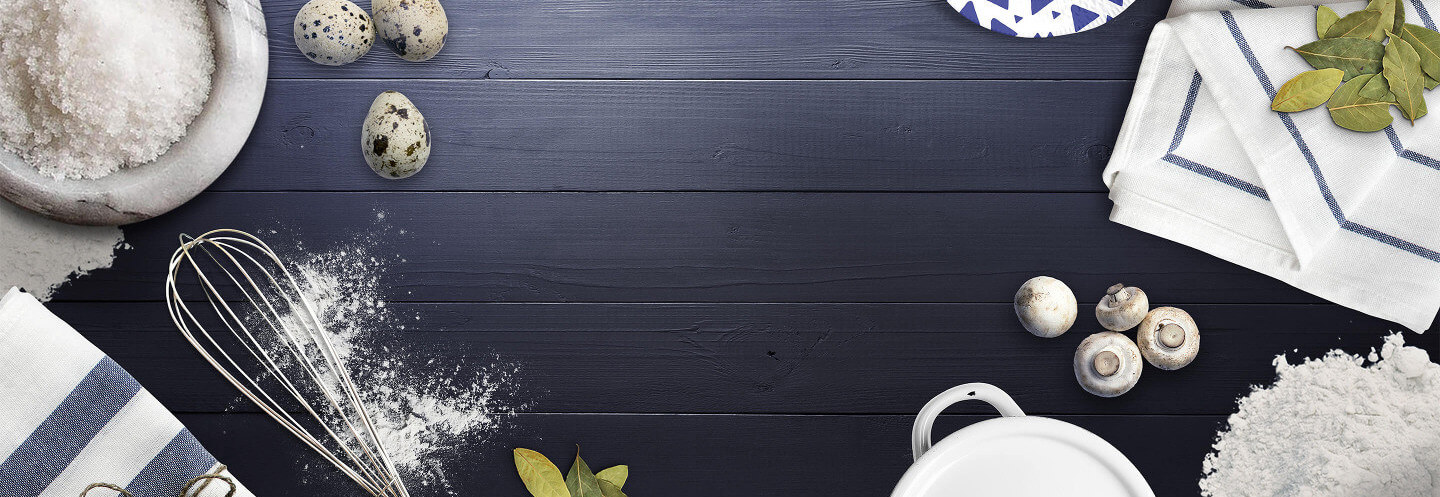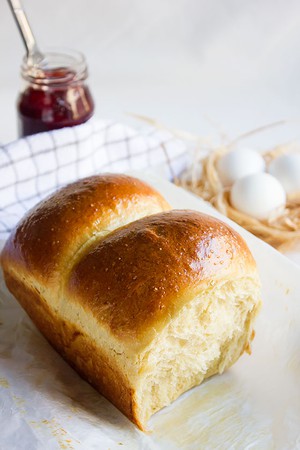https://www.copymethat.com/r/l0ImXp2WL/richard-bertinets-brioche-recipe-from-hi/
17677759
iQxgpEo
l0ImXp2WL
2024-04-18 05:42:30
Richard Bertinet's Brioche Recipe from his book, "Crust"
loading...
X
Servings: 4
Servings: 4
Ingredients
- 250g unsalted cold butter (fridge-cold, not freezer cold).
- 500g bread flour
- 50g sugar
- 15g fresh yeast (here I diverge and use 5g instant yeast dissolved in a tablespoon of water. The dissolving is important, even when using instant yeast).
- 10g salt
- 350g eggs (weigh them! Egg weights vary widely. The weight refers to the contents of the eggs, sans shells)
- 1 egg beaten with a pinch of salt for the eggwash.
Steps
- Cut the butter into small cubes and set aside. (This is important, as you will gradually have to incorporate the butter).
- In a large mixing bowl put the flour, sugar, salt, yeast, and eggs. Use a dough scraper to combine this into a cohesive mass. This will be a very soft, yellow, dough. It had an unusual smell, due to the eggs. I am not particularly fond of this smell.
- Turn out the mass of dough onto an UNFLOURED work surface. Use the dough scraper to help you. It is crucial that you use an unfloured surface, as you do not want to add any flour to the dough. Knead the dough well using the french folding method. This will not be easy at first. The dough will be very soft and feel very strange, but after working it for about 10 to 15 minutes, the dough will come together. This gluten development is important.
- We now start to gradually add the butter. Add a few butter cubes, and work them into the dough using the french folding methods. As you slap and fold, the cubes will become very thin sheets, and will be integrated into the dough. The smell of the dough will vastly improve, too. Keep adding the butter, little by little, until it is all integrated. This will take a good 20 minutes. When you are done, you will end up with a very silky, smooth, and soft dough. The dough will have a sweet, buttery, smell that's very enticing and pleasing.
- Lightly flour the work surface and shape the dough into a ball.
- Place in a large bowl, cover, and let rise at room temperature for two hours.
- Give the dough a stretch and fold, and place in the warmest part of your fridge to rise for 12 to 14 hours. The cool rise is very important. We want the butter to remain cold, otherwise it will be impossible to work with the dough.
- When ready to bake, shape the dough as desired (I like to make 14 balls of dough from it, and place 7, staggered, in a greased loaf pan. This is called Brioche Nanterre, and it is very beautiful). Cover and let rise for 2.5 hours.
- 30 minutes before baking, preheat the oven to 180C.
- Prépare the eggwash. Using a pastry brush, apply the eggwash to the brioches with a light hand. If desired, you can now also sprinkle with pearl sugar. I like the brioches unadorned. The brioche should rise very well, more than twice their size.
- Bake for about 40 minutes. If the brioche darkens too quickly, cover loosely with foil. The finished brioche should be dark golden in color, and register 95C inside. Remove from the pan and cool on a rack.
Notes
- Here is my experience with Brioche. First, I should mention that using melted butter and cold butter makes two different products. The melted butter will give a more cake-like texture, whereas the cold butter will give a more honeycomb like texture. I think that a brioche should have a honeycomb texture. (It all has to do with the way the fat coats the flour particles). Also, I prefer an all-egg brioche to a liquid-and-egg brioche (and I've tried water, orange juice, and milk, among liquids). Some brioche recipes will have you first make a sponge or a poolish; I don't think that it is necessary.
- My favorite brioche recipe, and then one I have had the most success with, is Richard Bertinet's recipe from "Crust" (an excellent book that should be on the shelves of any bread baker). Incidentally, it is also the first brioche recipe I have ever attempted. It is a hand-kneaded dough. I recommend to anyone making brioche to try their hands at making brioche dough by hand. It is very satisfying and also quite magical in how the dough comes together. You also learn a lot about proper brioche dough this way. I should mention that the first time I made this recipe, I forgot to add the sugar (and thus reaffirmed that fat in the dough does not hinder yeast growth whereas sugar does, contrary to popular belief).
- Anyhow, on to the recipe. I do diverge from Bertinet's instructions slightly, as I will mention soon.
- *****Notes: Brioche should be made in a cold kitchen. The dough must remain cool throughout the process. Otherwise, the butter will ooze out and you will end up with a mess. If your hands are very warm, keep a bowl of ice-water nearby. If your kitchen is very hot, cool it down, or don't use this recipe for making brioche.
- ***The brioche tastes best when it reaches room temperature. Stale brioche makes excellent bread pudding.



